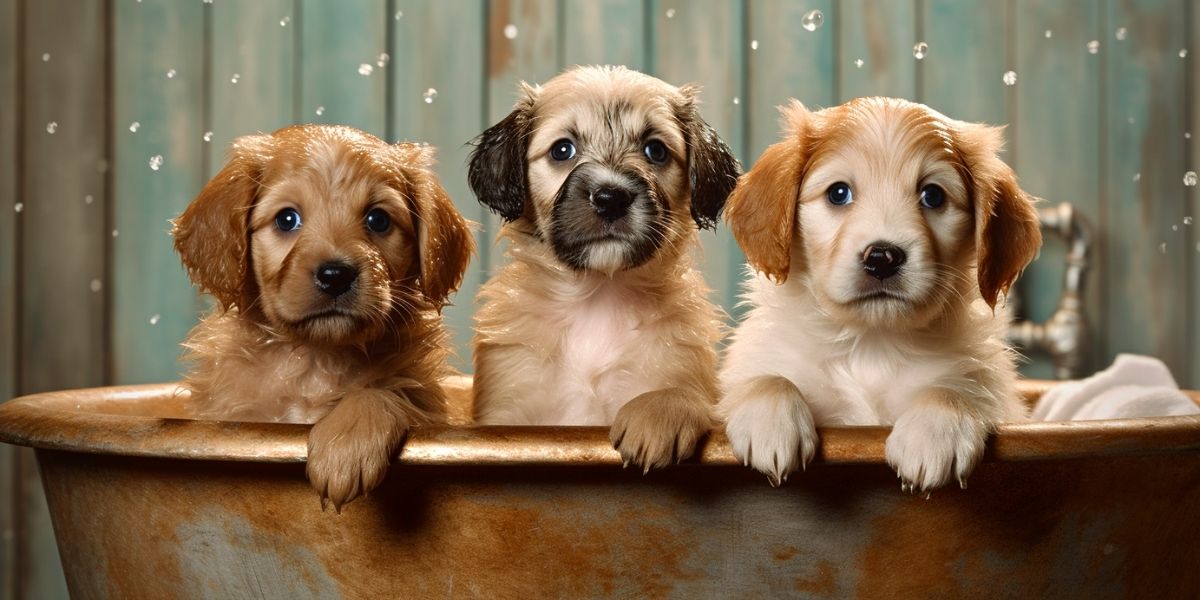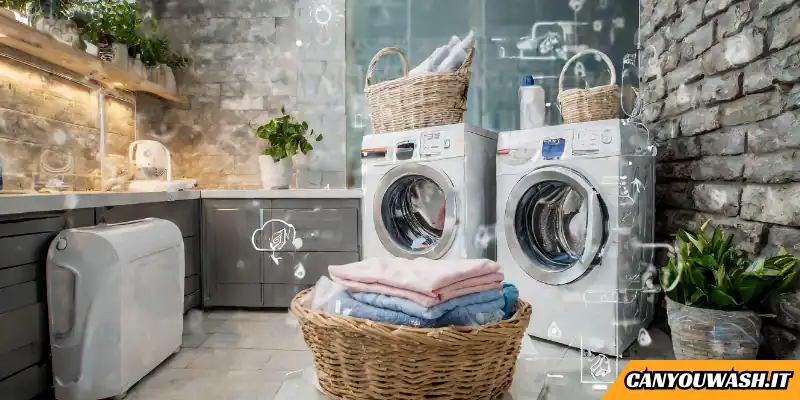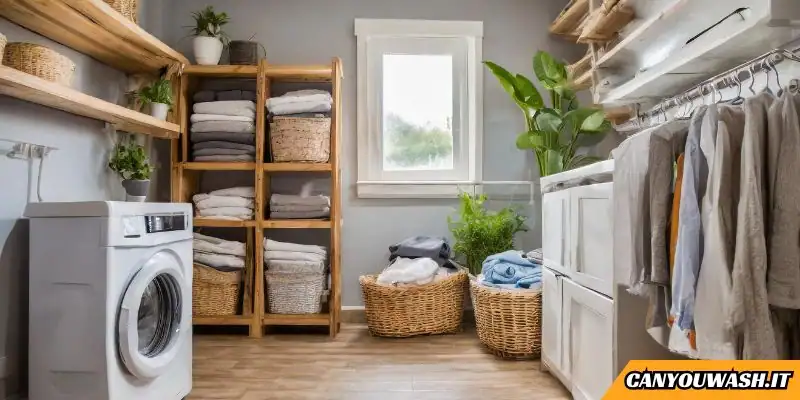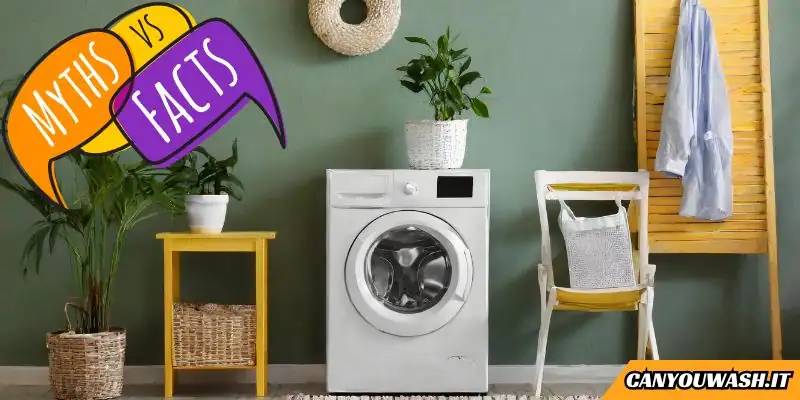Yes, you can wash puppies, ideally starting at about 8-12 weeks old, using puppy-specific shampoo and taking great care to ensure their safety and comfort.
The best age to give a puppy their first bath depends somewhat on the breed, but generally it’s safe to bathe them once they are about 8 weeks old. Some breeders and veterinarians, however, recommend waiting until the puppy’s immune system is more developed at around 12 weeks of age.
Always use a mild shampoo that is formulated specifically for puppies. These are designed to be gentle on their skin and fur. Adult dog shampoos may contain harsher ingredients that could irritate a puppy’s skin.
Remember to never leave a puppy unattended during bath time. Use warm water (not hot), and make sure the bath is a calm and comforting experience for your pup to ensure that they don’t develop a fear of bathing. Dry them thoroughly after the bath because puppies can get cold easily.
Also, consider consulting with a vet or a professional groomer before giving a bath to your puppy for the first time, just to make sure you’re doing everything correctly and safely.
Dos and don’ts of washing puppies
Dos
- Do wait until they’re 8-12 weeks old: Puppies’ immune systems aren’t fully developed at birth, so it’s advisable to wait until they’re at least 8-12 weeks old before giving them their first bath.
- Do use puppy-formulated shampoo: Puppy skin is more sensitive than adult dog skin. Always use a gentle, puppy-specific shampoo.
- Do keep the water warm: Puppies can get chilled easily. Make sure the bathwater is warm, but not hot.
- Do keep the bath short: To prevent chilling and minimize stress, keep bath time as short as possible.
- Do be gentle: Puppies are fragile. Use a soft cloth or sponge and be very gentle when washing.
- Do protect their ears: Water in the ears can lead to infections. Put cotton balls in the puppy’s ears to prevent water from getting in.
- Do thoroughly rinse off the shampoo: Leftover shampoo can irritate the puppy’s skin. Make sure all the shampoo is rinsed off thoroughly.
- Do dry them thoroughly: After the bath, dry your puppy thoroughly with a towel. You can use a hairdryer on the lowest setting, but only if the puppy doesn’t seem scared of it.
- Do make the experience positive: Give your puppy treats and lots of praise during and after the bath to create a positive association.
Don’ts
- Don’t bathe too frequently: Over-bathing can dry out your puppy’s skin. Puppies don’t need baths as often as adult dogs, so once a month is usually sufficient unless they’re particularly dirty.
- Don’t use human shampoo or soap: These products can be harsh on puppy skin. Always use a shampoo formulated for puppies.
- Don’t get soap in their eyes or mouth: Soap can irritate your puppy’s eyes or mouth. Be very careful when washing around these areas.
- Don’t rush: While you don’t want to prolong the bath unnecessarily, don’t rush through it either. This is a new experience for your puppy, so take your time and make sure they’re comfortable.
- Don’t leave your puppy unattended in the bath: Even in shallow water, puppies can easily panic and potentially inhale water. Always supervise your puppy during bath time.
- Don’t force it: If your puppy is very scared of the bath, don’t force them. Consider alternatives, such as wipes or dry shampoo, and consult with a professional groomer or your vet for advice.
5-step guide to washing puppies
Step 1
Preparation – Gather all your bathing supplies beforehand. This includes puppy shampoo, a soft towel, a soft cloth or sponge, and cotton balls. Fill a tub or sink with warm (not hot) water. The water should be shallow enough for your puppy to stand in without it covering their head. Put cotton balls gently into your puppy’s ears to prevent water from getting in.
Step 2
Introduction – Slowly introduce your puppy to the water. Let them sniff and explore the tub or sink without water first. Then, let them get used to the sensation of water by gently pouring some over their body using a cup or your hand. Always make sure your puppy feels secure and comforted.
Step 3
Shampooing – After your puppy is comfortable, slowly apply the puppy shampoo. Start from the neck and work your way down to the tail, gently massaging the shampoo into the coat. Be very careful to avoid the face, especially the eyes and mouth. You can use a soft cloth or your fingers to gently clean the facial area without shampoo.
Step 4
Rinsing – Thoroughly rinse your puppy using a cup or gentle spray. Make sure all the shampoo is rinsed off, as leftover shampoo can irritate the skin. Again, be careful around the face and make sure not to get water in the puppy’s ears.
Step 5
Drying – Once they are thoroughly rinsed, lift your puppy out of the bath and wrap them in a soft towel. Gently pat them dry, don’t rub as this can tangle their fur and irritate their skin. If your puppy is comfortable with it, you can use a hairdryer on the lowest setting to help dry their fur, but make sure to keep it a good distance away from their skin. After the puppy is dry, reward them with lots of praise and a treat to reinforce the positive experience.
Remember, each puppy is unique and might require a different approach. The goal is to make this experience as positive and stress-free as possible. If your puppy is showing significant fear or stress during bath time, consider consulting with a professional groomer or a veterinarian for advice.
FAQs
How often should I bathe my puppy?
Puppies generally don’t need to be bathed as frequently as adult dogs. Unless your puppy gets particularly dirty, a bath once a month should suffice. Bathing too often can dry out their skin and remove essential oils from their coat.
What should I do if my puppy is scared of bath time?
Make bath time as pleasant as possible. This might mean using warm water, speaking in a soothing voice, providing treats and praises, and ensuring the bath is short but effective. If your puppy is extremely scared, consider consulting with a veterinarian or professional groomer for advice. They may recommend alternatives such as puppy wipes or dry shampoos.
What should I do if soap gets into my puppy’s eyes or mouth?
If soap accidentally gets into your puppy’s eyes or mouth, rinse it out with plenty of fresh water immediately. Puppy shampoos are usually formulated to be tear-free, but they can still cause discomfort. If your puppy seems excessively irritated or distressed, consult a veterinarian.
Can you wash a 9 week old puppy?
Yes, you can wash a 9-week-old puppy. At this age, puppies are usually able to regulate their body temperature more effectively and are less sensitive than newborn puppies. However, it’s important to make the process as stress-free as possible by using warm water, a gentle puppy-specific shampoo, and by drying them thoroughly afterward.
Always ensure to protect their eyes and ears during the bath, and never leave them unattended. If this is their first bath, they may be nervous, so try to make the experience positive, with lots of praise and perhaps a treat afterward.
Can you wash a 11 week old puppy?
Yes, an 11-week-old puppy can be bathed. By this age, they should be better equipped to handle the experience than a younger puppy. Be sure to use warm water and a gentle, puppy-specific shampoo. Avoid getting water or soap in the puppy’s ears or eyes and never leave them unattended during the bath.
Try to make the experience positive and calm, rewarding your puppy with praise and possibly a treat afterward. Always dry your puppy thoroughly after the bath, as they can get cold easily.
Can you wash a 12 week old puppy?
Yes, a 12-week-old puppy can be safely bathed. It’s generally around this age that it’s considered most appropriate to introduce a puppy to their first bath. As always, remember to use warm water and a gentle shampoo formulated specifically for puppies.
Take precautions to keep water and shampoo out of their ears and eyes, and never leave your puppy unattended during bath time. It’s also crucial to dry your puppy thoroughly afterwards to prevent them from getting cold. Try to make the bath time experience positive and stress-free to help your puppy build a good association with it.
Final thoughts 💭
Washing a puppy involves careful preparation and gentle handling. The process generally includes preparing your supplies (puppy shampoo, soft towel, cloth or sponge, and cotton balls), introducing your puppy to the water, applying the shampoo, rinsing thoroughly, and drying your puppy gently. It’s important to keep the experience positive and stress-free for your puppy.
Frequent baths are not required for puppies; once a month is usually sufficient unless they get particularly dirty. If your puppy is scared or if soap gets into their eyes or mouth, it’s crucial to make them comfortable and rinse well, or consult a vet for further advice.





Leave a Reply